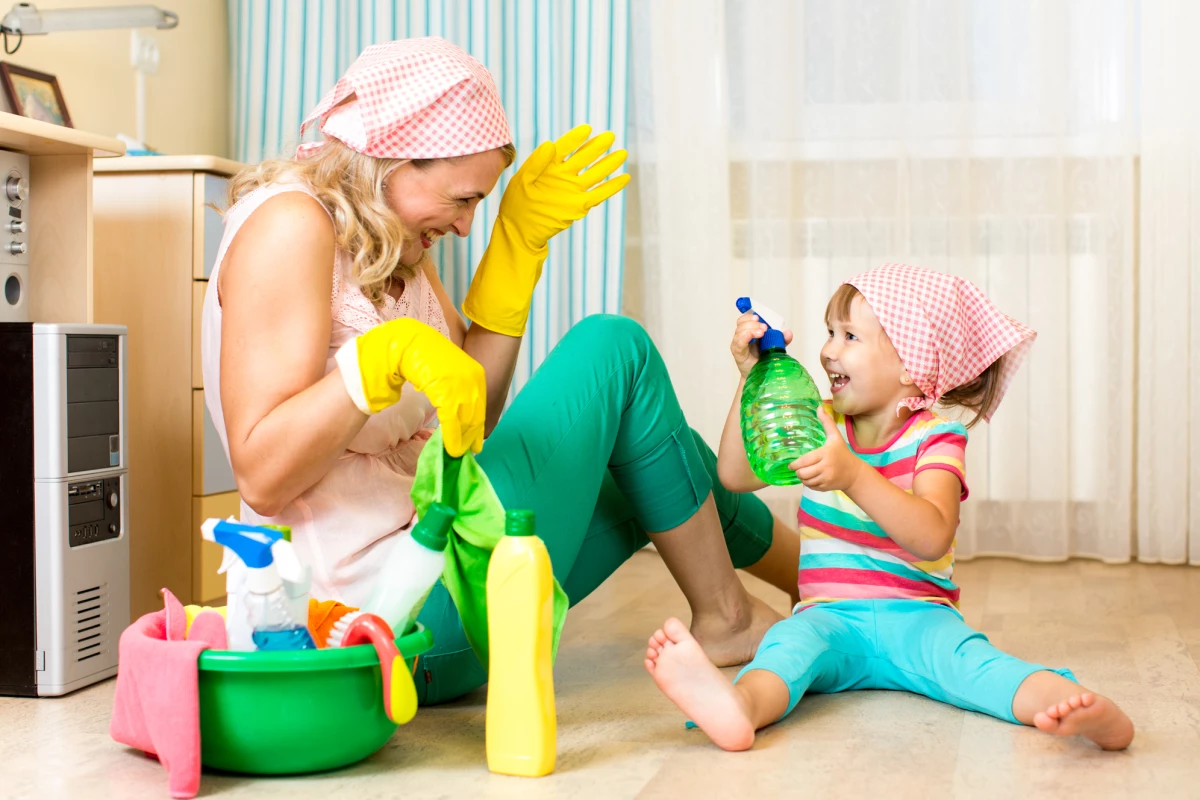A newly published longitudinal study out of Canada has found a strong association between frequent use of household cleaning products and an increased risk of children developing asthma in the first three years of life.
"Most of the available evidence linking asthma to the use of cleaning products comes from research in adults," explains Tim Takaro, lead researcher on the project, from Simon Fraser University. "Our study looked at infants, who typically spend 80-90 percent of their time indoors and are especially vulnerable to chemical exposures through the lungs and skin due to their higher respiration rates and regular contact with household surfaces."
The research gathered data from an ongoing study called CHILD (Canadian Healthy Infant Longitudinal Development) that is following over 3,400 children from pregnancy through childhood. However, the new research only focused on around 2,000 subjects in the study.
Parents were asked to report their frequency using 26 different common household cleaning products during their child’s first three months of life. These products included dishwashing detergents, surface sprays, and air fresheners. Follow-up occurred when the child was around three years old, to evaluate the development of asthma or wheezing.
The results revealed a distinct correlation between increased rates of asthma and frequency of cleaning product use. In fact, the highest rate of cleaning product use was associated with a 37 percent greater risk of developing asthma by the age of three.
"Interestingly, we did not find an association between the use of cleaning products and a risk of atopy alone," notes Takaro. Atopy being general allergic sensitization, evaluated through skin allergy tests. "Therefore, a proposed mechanism underlying these findings is that chemicals in cleaning products damage the cells that line the respiratory tract through innate inflammatory pathways rather than acquired allergic pathways."
The researchers do not rule out the increased asthma risk being related to microbiome development disruptions influenced by the increased use of cleaning products. However, scented and sprayed products were linked with the highest rates of respiratory problems developing. This suggests the association could be explained by volatile organic compounds in the air being inhaled and triggering an immune response in the child’s airways.
It is important to note this is an observational association, and causality can only be hypothesized. The researchers do point to a small body of study finding cleaning products and air fresheners can trigger asthma attacks in adults, suggesting this validates a potential causal link. Although it is worth noting, these studies are also mostly observational.
Jaclyn Parks, lead author on the new research, says small interventions could result in lowering the risk of a child developing asthma. These include picking cleaning products that are not sprayable, and eliminating products with strong fragrances.
“The risks of recurrent wheeze and asthma were notably higher in homes with frequent use of certain products, such as liquid or solid air fresheners, plug-in deodorizers, dusting sprays, antimicrobial hand sanitizers and oven cleaners," says Parks. "It may be important for people to consider removing scented spray cleaning products from their cleaning routine. We believe that the smell of a healthy home is no smell at all."
The new study was published in the journal CMAJ.
Source: Simon Foster University




